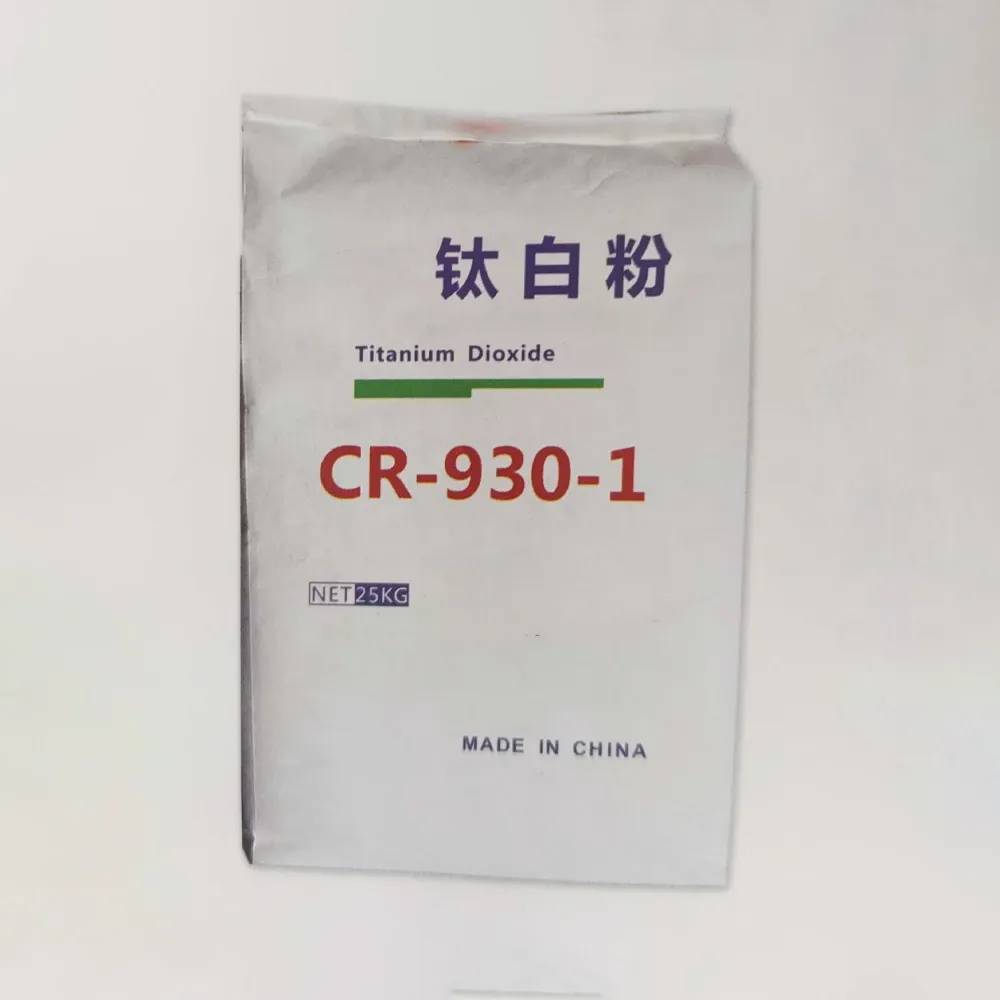
Juil . 04, 2025 11:12 Retour à la liste
Using Titanium Dioxide to Reduce the Discoloration Rate of Rubber Products
Titanium dioxide (TiO₂) is a widely used compound known for its exceptional opacity, brightness, and UV-resistant properties. In the rubber industry, titanium dioxide poudre is frequently incorporated into formulations to enhance durability and aesthetic qualities. One of the most significant challenges in rubber manufacturing is the discoloration of products due to environmental factors such as UV radiation, oxidation, and chemical exposure. By integrating titanium dioxide pigment into rubber compounds, manufacturers can significantly reduce the discoloration rate, extending the lifespan and visual appeal of rubber goods.

The Science Behind Le dioxyde de titane’s UV Protection
Le dioxyde de titane color stability plays a crucial role in preventing rubber degradation. The compound acts as a physical blocker against ultraviolet light, scattering and reflecting harmful UV rays before they penetrate the rubber matrix. Unlike organic UV absorbers that degrade over time, titanium dioxide coating provides long-lasting protection due to its inorganic nature. The high refractive index of TiO₂ ensures maximum light diffusion, minimizing photo-oxidative reactions that lead to yellowing and brittleness in rubber products.
Moreover, titanium dioxide manufacturer often modifies the surface of TiO₂ particles to enhance dispersion within rubber matrices. Proper dispersion ensures uniform UV shielding, preventing localized degradation that could compromise the structural integrity of rubber items such as tires, seals, and industrial hoses.
Enhancing Rubber Durability with Le dioxyde de titane Pigment
Rubber products exposed to outdoor conditions are particularly susceptible to discoloration. The incorporation of titanium dioxide pigment not only preserves the original color but also reinforces the material against thermal and oxidative stress. When rubber undergoes prolonged exposure to sunlight, the polymer chains break down, leading to surface cracks and fading.
By embedding TiO₂ into the rubber formulation, manufacturers create a protective barrier that deflects UV radiation. This is especially critical for white or light-colored rubber goods, where discoloration is more visibly apparent. The titanium dioxide poudre effectively masks early signs of aging, ensuring that products retain their aesthetic and functional properties for extended periods.
Industrial Applications: Where Le dioxyde de titane Coating Makes a Difference
Several industries benefit from the use of titanium dioxide coating in rubber products:
Automotive Sector: Rubber components such as weatherstrips, gaskets, and tire sidewalls are prone to UV-induced discoloration. TiO₂-treated rubber maintains its appearance and elasticity, improving vehicle longevity.
Construction Materials: Rubber roofing membranes and sealants exposed to sunlight require UV stabilization to prevent premature failure.
Consumer Goods: Footwear, sports equipment, and outdoor furniture often incorporate TiO₂ to resist environmental wear.
A reliable titanium dioxide manufacturer ensures that the TiO₂ used in these applications meets stringent quality standards, providing optimal performance without compromising rubber flexibility.
Challenges and Considerations in Using Le dioxyde de titane for Rubber
While TiO₂ offers substantial benefits, improper usage can lead to inefficiencies. The particle size and concentration of titanium dioxide poudre must be carefully controlled to avoid compromising rubber elasticity. Excessive TiO₂ loading may increase stiffness, affecting the product's mechanical properties.
Additionally, the choice between rutile and anatase TiO₂ influences performance. Rutile titanium dioxide pigment is preferred for rubber applications due to its higher UV resistance and stability. Manufacturers must also consider dispersion techniques to prevent agglomeration, which could create weak points in the rubber structure.
Innovations in Le dioxyde de titane Technology
Advancements in nanotechnology are paving the way for more efficient titanium dioxide coating solutions. Nano-sized TiO₂ particles offer superior dispersion and UV-blocking efficiency at lower concentrations, reducing material costs while enhancing performance. Furthermore, eco-friendly production methods are gaining traction, with titanium dioxide manufacturer adopting sustainable processes to minimize environmental impact.
Research is also exploring hybrid additives that combine TiO₂ with other stabilizers, such as hindered amine light stabilizers (HALS), to create synergistic effects in rubber protection.
The integration of titanium dioxide pigment into rubber formulations is a proven strategy for reducing discoloration and enhancing durability. By leveraging the UV-resistant properties of TiO₂, manufacturers can produce long-lasting, visually consistent rubber products capable of withstanding harsh environmental conditions. As technology evolves, innovations in titanium dioxide poudre and coating techniques will further optimize rubber performance, ensuring continued relevance across multiple industries.
For businesses seeking reliable solutions, partnering with a reputable titanium dioxide manufacturer is essential to achieving the desired balance between aesthetics and functionality in rubber products.
-
Using Titanium Dioxide to Reduce the Discoloration Rate of Rubber Products
NouvellesJul.04,2025
-
The Influence of Titanium Dioxide on the Printability of Paper
NouvellesJul.04,2025
-
The Environmental Impact of Using Titanium Dioxide in Paper Production
NouvellesJul.04,2025
-
The Dual Function of Filling and Coloring with Titanium Dioxide in Rubber
NouvellesJul.04,2025
-
Hidden Techniques for Improving Ink Adhesion with Titanium Dioxide
NouvellesJul.04,2025
-
Comparison of the Application of Titanium Dioxide in Flexographic and Gravure Printing Inks
NouvellesJul.04,2025
